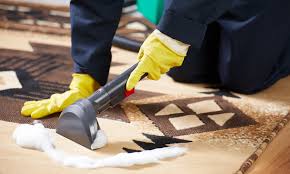Traditional Necklaces for Women: Timeless Elegance Rooted in Culture
- by smanik@5434
Jewelry has always held a special place in women’s fashion, and among the most cherished adornments are Traditional Necklaces for Women. These exquisite pieces are more than mere accessories—they are symbols of heritage, craftsmanship, and personal expression. From ancient civilizations to modern-day weddings, traditional necklaces have remained central to the cultural identity and aesthetic beauty of women around the world.
The Cultural Significance of Traditional Necklaces
Traditional necklaces vary widely across cultures, each telling a unique story through materials, motifs, and craftsmanship. They often symbolize:
- Status and wealth
- Spiritual beliefs
- Marital status or rites of passage
- Regional identity and tradition
In many societies, these necklaces are passed down through generations, becoming heirlooms that preserve family history and regional artistry.
Styles Across the World
- Indian Traditional Necklaces
India boasts one of the richest traditions of jewelry-making, with iconic styles like:
- Kundan: Known for its elaborate setting of gemstones in gold, often worn at weddings.
- Polki: Uncut diamond necklaces set in gold, exuding raw elegance.
- Temple jewelry: Inspired by temple art and deities, usually crafted in antique gold with motifs of gods and goddesses.
- Mangalsutra: A sacred necklace worn by married Hindu women, made with black beads and gold.
Each design holds symbolic meaning, deeply embedded in religious and cultural practices.
- African Beaded Necklaces
African cultures are renowned for their bold and colorful beaded necklaces, each bead and pattern holding significance. Maasai necklaces from Kenya and Tanzania, for instance, use intricate beadwork to represent age, status, and community. These vibrant pieces are both artistic and symbolic.
- Middle Eastern and Arab Necklaces
Gold dominates Middle Eastern traditional jewelry, with designs that are often intricate and heavy. Popular styles include chokers and multi-layered necklaces with geometric and floral patterns. These are often worn during weddings, festivals, and family ceremonies.
- Chinese and East Asian Necklaces
Traditional Chinese necklaces often feature jade, which is believed to bring good fortune and protection. Designs may include symbols like dragons, phoenixes, or lotus flowers, all of which carry deep cultural and spiritual meanings.
- Native American Necklaces
Made with natural elements like turquoise, bone, and shell, Native American necklaces reflect harmony with nature. The squash blossom necklace, especially among the Navajo people, is a renowned example—often featuring silver and turquoise in stunning, symbolic arrangements.
Materials and Craftsmanship
Traditional necklaces are made using a range of materials:
- Precious metals: Gold, silver, and platinum
- Gemstones: Diamonds, rubies, emeralds, sapphires
- Natural elements: Wood, bone, shells, and beads
- Textiles and threadwork: Used in tribal and handmade designs
Skilled artisans spend hours, sometimes days, crafting a single piece, ensuring every detail reflects the cultural heritage it represents.
Modern Appeal and Versatility
While traditional necklaces are rooted in history, they continue to inspire modern fashion:
- Fusion styles combine traditional motifs with contemporary design, making them suitable for both ethnic and Western outfits.
- Minimalist adaptations of classic designs cater to younger generations seeking elegance without extravagance.
- Statement pieces remain popular for weddings, festivals, and cultural events.
Stylists and designers frequently incorporate traditional necklaces into modern wardrobes, proving their timeless appeal.
Choosing the Right Traditional Necklace
When selecting a traditional necklace, consider:
- Cultural relevance: Choose styles that align with your heritage or personal aesthetic.
- Occasion: Some designs are ideal for daily wear, while others are meant for weddings or ceremonies.
- Material: Go for hypoallergenic options if you have sensitive skin.
- Craftsmanship: Handcrafted pieces often offer better quality and unique charm.
Final Thoughts
Traditional necklaces for women are more than just beautiful ornaments—they are vessels of history, identity, and artistry. From the gold-drenched designs of India to the vibrant beads of Africa, these necklaces celebrate femininity and culture in every link and gemstone. Whether worn for special occasions or as everyday tokens of heritage, traditional necklaces continue to enchant women across generations, blending timeless elegance with deep cultural roots









